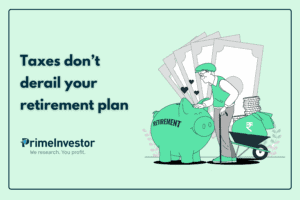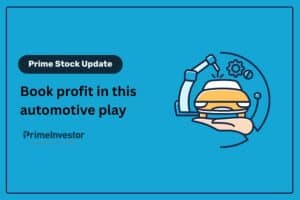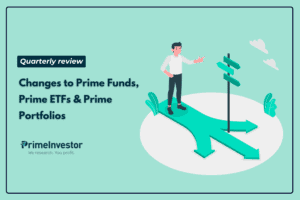With inputs and data from Bipin Ramachandran
With even the plainest of index funds delivering great returns, Indian equities now have a fan club rivalling actor Rajnikanth’s.
You find many X handles claiming that they will never invest in any asset except stocks. Wealthy investors interviewed in the pink papers breezily put their personal equity allocation at 100%, while dissing fixed deposits, bonds, real estate and gold as useless assets.
So, are all those investment books and grey-haired investment gurus wrong, when they tell us that we should be owning multiple assets in our portfolio, with a well-thought-out asset allocation? Let us assure you that they aren’t.

‘Best’ asset changes over time
All those folks who are advocating 100% equity portfolios today, have given in to recency bias. They’ve started believing that equity returns are a certainty because they’ve seen the stock markets rally strongly in the last ten years, with very brief corrective phases. But that’s not the true nature of the beast.
Scenario 1
For those taking stock in February 2024, equities look like the best asset class to own because their 10-year CAGR (compounded annual growth rate) is 13.8%, while gold has returned 7.3% and debt has delivered 9.2%.
Scenario 2
If you looked at 10-year returns in December 2020 (graph below), government bonds were looking like a much better asset class than equities, as their 10-year return was at 9.9%, while equities managed 8.8% and gold gave 9.3%.
Scenario 3
In August 2020, the 10-year record would have convinced you that bullion is your best bet, because the 10-year gold return was 11.9% while equities had returned an anaemic 7.6% and government bonds 9.9%.
The above data goes to show that point-to-point or trailing returns on a specific date can be a highly unreliable guide to choosing your asset classes.
Modelling the investor experiences with full equity portfolios
This is why, to assess how 100% equity portfolios fare in real life compared to asset allocated portfolios, Primeinvestor ran a rolling return analysis spanning the last two decades in the Indian markets.
To calculate rolling returns, we used the Nifty100 index as a proxy for equities, SBI Gilt Fund as a proxy for bonds and Indian gold prices (in Rupees) as a proxy for gold from January 2003 to February 2024. (We chose SBI Gilt Fund to approximate bonds because it has a 20-year track record and is easy for retail investors to own).
Over this two-decade period, the Nifty100 delivered a point-to-point return of 15.86%, the gilt fund delivered 6.86% and gold returned 12.11%.
Selling too soon
Though those equity returns over a twenty-year holding period look great, they were very hard to achieve in real life.
To explain why, let’s take the example of Mr Hopeful who began with a 100% equity portfolio and invested only in the Nifty100 index in January 2003.
In the very next year after he started investing, Mr Hopeful would have hit the jackpot. Between April 2003 and April 2004, with the markets shooting up, his portfolio would have delivered a bumper 116% return. His Rs 10 lakh investment would now be worth a cool Rs 21.6 lakh!
But had he rejoiced and sold off his portfolio to book profits, he would have missed out on four more years of blockbuster stock market returns. Assuming Mr Hopeful was a patient investor and held on to his stocks only portfolio for the four years from April 2004 to September 2008, his portfolio would have been up by 230% in absolute terms, taking his portfolio value up from Rs 21.6 lakh to Rs 49.7 lakh.
By this time, the stellar gains on his portfolio would have made him believe that he was on to a sure thing, and that he should stick to his 100% equity portfolio. But with the arrival of the global financial crisis from October 2008, he would have suffered a nasty shock.
For, within the next three months from October to December 2008, the stock indices plummeted, reducing his portfolio to rubble. In just three months, he would have seen about 41% of his wealth wiped out and his portfolio value back at Rs 28.8 lakh.
Just as he was giving up all hope, the market upswing from October 2008 to June 2009 would have taken up his wealth to Rs 51.7 lakh.
Now, having seen his wealth decimated by 50% just the previous year, it would have taken superhuman effort for Mr Hopeful to stay invested at this juncture. Every instinct would have cried out for him to sell his entire portfolio, while the going was good.
One can continue to trace Mr Hopeful’s story over the next 15 years, when the market saw many more crashes and rallies. But his stomach-churning ride in the first six years of his investment career, is a good illustration of why equity-only portfolios work only in theory.
If they had all their wealth invested in equities, most investors would find it behaviourally very difficult not to sell when markets crash or book profits when it trebles in short order.
This is the first reason why 100% equity portfolios don’t work. The big losses and gains that the stock markets deliver from year to year aren’t conducive to holding your investments for the long-term. And yet, an investment horizon of 10 plus years is necessary for a great return experience from equities. buy-and-hold investing.
Instead of getting very adventurous with a 100% equity portfolio, had Mr Hopeful opted for an asset allocated portfolio with 60% in equities and 40% in debt, his ride would have been far smoother.
His portfolio return in his best year would have been 67.6%. In the worst year he would have lost 32.3%. The smaller gap between the good and bad years would have made his journey smoother, significantly improving his odds of buying and holding for 20 years.
A 60-40 portfolio would have got him to a CAGR of 13.5% by February 2024. This is lower than the 15.8% CAGR from a 100% equity portfolio. But behaviourally, the 13.5% return is more attainable than the 15.8% return.
Surviving single digits
It is not just big market ups and downs that investors with equity-only portfolios need to endure. They also need to keep faith through long spells when their portfolio delivers losses or sub-par returns.
Our rolling return analysis shows that with an equity-only portfolio, Mr Hopeful would have had to put up with loss making years about 18.6% of the time in the 20-year journey. With a 60:40 portfolio, he would have had to endure losses only 12% of the time.
Fewer loss-making periods would have made it easier for Mr Hopeful to hang on to his portfolio without panicking, so that he could benefit from bull markets when they arrived.
Beating inflation
Some market mavens recommend going all-in on equities because “Equities are the only asset class that beat inflation”.
While it is true that the CAGR on an equity-only portfolio beats inflation over 10 or 20 years, equity-only portfolios don’t beat inflation every year.
Investors who have entered Indian equities in the last five years are supremely confident about this asset because they’ve never experienced vexing spells when their portfolios deliver single-digit returns. But more seasoned investors will tell you about a long period between 2011 and 2013 when equities struggled to get them to a 6% CAGR even after hanging on for five years.
Our rolling return analysis tells us that on a one-year basis, an equity-only portfolio would have delivered a return of less than 6% about 30% of the time in the last twenty years. Given that long term inflation rates in India average 6%, that’s a fairly high frequency for your portfolio to do worse than inflation.
100% debt portfolios did even more badly at beating inflation, with such a portfolio not delivering a 6% return 51% of the time. However, if you held an asset allocated portfolio with 60% equity, 10% gold and 30% debt, then you managed to beat a 6% return about 75% of the time.
Loss-making spells or periods of low returns from equities usually follow long bull markets that have pushed equity returns well above long-term averages. We are currently in the midst of such a phase. Therefore, asset allocated portfolios are likely to fare much better going forward, than equity-only portfolios.
But is an equity and debt mix enough to reap the benefits of asset allocation? Should you go with a 60-40 portfolio or experiment with other allocations? We’ll answer these questions in our next few articles on this subject.
You can now check whether your are holding the right risk-adjusted asset allocation for your goal, time frame and risk profile by using our super-comprehensive Portfolio Review Pro tool.







18 thoughts on “A 100% equity portfolio: Will it work?”
Thank You for starting a discussion on this key topic. Hoping that subsequent articles will give a solution – what is the ideal mix. This issue is very important for those who have build the corpus for retirement and have time left for starting to use. Mix should be sufficient to beat the inflation plus have small growth to cover uncertainities.
Yes we will be exploring various debt equity mixes to give a solution in coming articles.
Is it only for 100% equity mF or is it valid for 100%direct equity shares and mF ?
I am in later category
I am comfortable with near 100 % allocation with shares and m f
I am holding them for past 35-40 years
I intend to pass on to next generation
Please include in your portfolio review Pro tool , equity shares too…
Regards
Mam
I totally disagree on your hypothesis.
I have been investing in MFs -pure equity for 24 years now.
If my end goal is long term & retirement planning , what you say is absolutely wrong.
I have made average 17% in equities and seen my investments crash over 60% atleast thrice for 3.5 years – I never flinched & sold but continued my savings irrespective of yearly CAGR
It’s stupid to match so called real estate, gold, bonds which all arent near liquid …..
So in my experience, park 3 to 4 years worth of annual expenditure in debt , rest in equity, switch off telly, news and wannabe financial planners, sit back, relax and your corpus is made
This is not a hypothesis but a number based analysis. You haven’t mentioned if your portfolio outside of MFs is also all-equity – no PF, FDs etc. But if a portfolio without asset allocation has worked for you, that’s great. Congrats on being an exceptional investor who isn’t subject to any human emotions of doubt, greed or fear :-)
But 99% of investors including me, aren’t like you and so we do need asset allocation.
Hi Aarti,
I have been investing in equities for two decades now and the only reason to withdraw money for me was when I have sudden expense. So for future if I have enough amount to cover say 2 years worth of total expense or have enough funds that I would require in debt.,then can I put the remaining completely into equity so that I can maximize my returns? This is an alternate methodology to arrive the percentage of debt that needs to be in my PF to maximise returns. But What i wanted to know is that is there a potential to maximise returns just by rebalancing and if so then what is the best Equity to debt ratio that needs to followed and what frequency that needs to be rebalanced to maximise retuens
Hello Sir,
To answer your questions:
The two main reasons for not recommending a 100% equity portfolio for anyone are:
1) One shouldn’t be forced to sell equity at an unfavourable time. Having debt instruments to cover emergency funds, short term goals, and other reserves will help us to hold on to equity when the market corrects.
2) An equity only portfolio will face big drawdowns when markets correct. This shouldn’t make the investor nervous and sell.
You asked if you have ‘enough funds’ in debt, can you go completely equity to maximise returns. Since this addresses the first point above, you can.
If you think drawdowns wouldn’t make you nervous, from the psychological aspect, you can have as much equity as you’re comfortable with. Also, looking at the entire portfolio, you will not be having a 100% equity portfolio as you have debt also (from the last point)
Regarding adding debt for rebalancing and maximising returns: This may seem possible retrospectively, especially during selected periods. For example, if one rebalances in favour of debt as part of yearly rebalancing in 2020 January and does another special rebalancing in favour of equity due to big drawdown in 2020 March, the portfolio will have extra returns due to rebalancing. However, the key is to set rules for rebalancing that captures these scenarios in the future. If we do such an analysis, we will find that, even though these rules may give alpha due to rebalancing in the year 2020, it should have clipped upsides in other years and looking at longer periods, the ‘rebalancing’ isn’t giving alpha to the returns.
In short, rebalancing is a method to reduce risk or increase risk adjusted returns rather than increasing returns alone for the long term.
Hope that answers the questions.
Good article. ‘Loss-making spells or periods of low returns from equities usually follow long bull markets that have pushed equity returns well above long-term averages. We are currently in the midst of such a phase. ‘ – Could you please let us know how long do you think this phase could last? Are we in a bubble/over-valued now? If yes, at what levels of Nifty100 would you recommend re-entering the market to beat FDs (for example)?
Also, economic historian Russell Napier talks about financial repression due to elevated debt levels being the new norm (at least in the developed markets) – please see article below. In this scenario, do you think buying debt is riskier in comparison to equities?
https://themarket.ch/interview/russell-napier-the-world-will-experience-a-capex-boom-ld.7606
The debt metrics of the Indian govt are on an improving path so I believe debt is a safer asset today in terms of valuation. The imminent FPI flows into Indian debt due to global bond inclusion is a tailwind too.
On equities rather than a 0 or 100 kind of approach a tactial approach where you set minimum and maximum equity allocation (it’s about 50% and 65%) for me works better. Today it seems safer to be closer to that lower end
Thank you!
How do u manage to do the tactial approach where you set minimum and maximum equity allocation (it’s about 50% and 65%) . WIll be helpful for us to know
It requires closer tracking of markets and is a bit subjective. I usually move gradually to 50% equity when Nifty PE over 24 and I also see behavioural signs of froth in mkts. Add equity after a material fall of 15% when there’s more pessimism around.But this kind of loose tactical calls can go wrong too as you can reduce equity too early.
Excellent Aarati. Awaiting your next on asset allocation permutations. Please do advise on Gold as well.
Thanks and Regards
Rajiv Kumar Mendiratta
Thank you for bitter truth article.
😁 hope helpful nevertheless!
Excellent article from Aarati and Bipin’s data (which is always mind blowing)
Another question on this
A younger one starts his job and let’s take he has working career span of 25 years from age 25 to 50.
He continues to invest aggressively 100% in a nifty100 index till age of 42/43.
Now he is earning more also , probably highest till what he earned all this year. Now from his age 43 to 50, he investe 100% debt.
Do you see a flaw in this ?
May be some data insights into it .
This is a good strategy in theory. But as we’ve said in the article, it’s very tough for first timers to hang on to 100% equity portfolios if there are 30-50% corrections. Over a 10 year period you will encounter 1-2 such phases
Thank you! A much needed one to keep us grounded and allocation in check…!
Comments are closed.